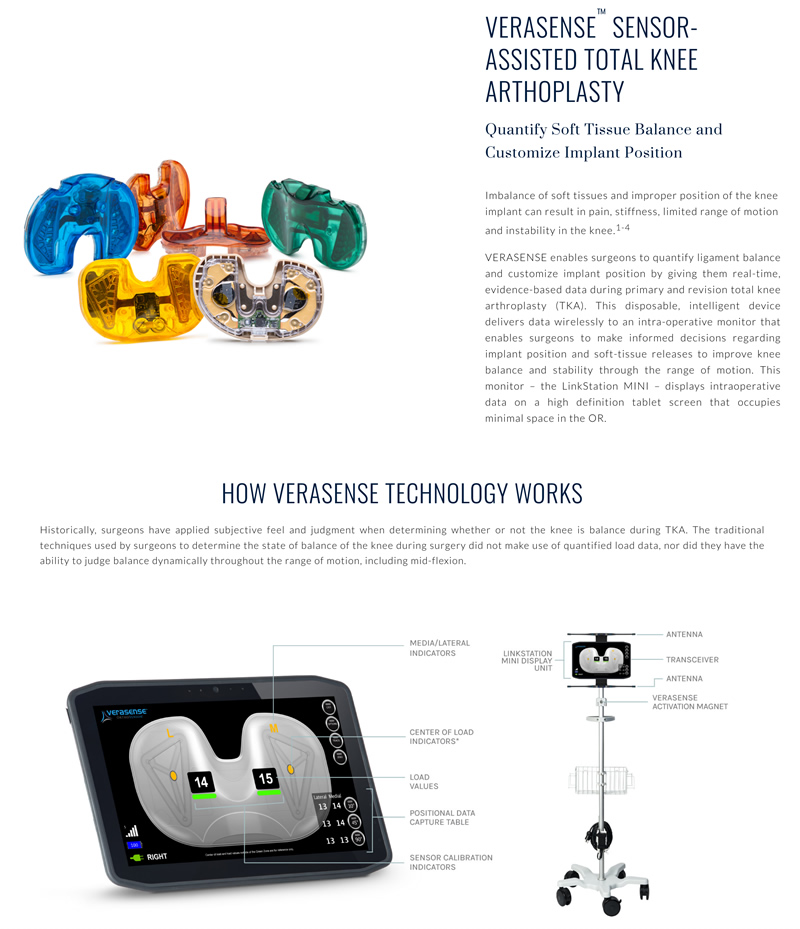OrthoSensor
Historically, surgeons had to rely on their judgment and experience to balance the knee. VERASENSE is making soft tissue balance a more precise science. Once the implant is placed in the knee, VERASENSE replaces the plastic tibial trial spacer, which is part of the knee implant. As your surgeon takes your knee through the range of motion, the sensor wirelessly communicates with a monitor in the operating room, providing data to assist your surgeon in better balancing your knee.
Ask Dr. Sah about his research study evaluating this technology and offering free access to patients who are interested.






